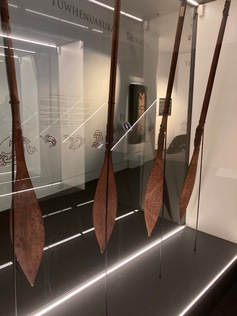Research Projects
Research Topic Indigenous Socio-Technical Systems
Decentralised Systems for Resilient Communities
We are building novel systems with decentralised architectures for community and digital resilience. Such systems must be resistant to security threats and vulnerabilities, and adaptable to the emerging needs of the community that govern and own them.
Research Topic - The Indigenous IT artefact
The idea that an artefact can be a digital object is often debated within the hallways of academia, referred to as a general term referencing a ‘thing’ that is digitally formatted. The term ‘artefact’ originates in the early 19th century translated from Latin as arte ‘by or using art’ with ‘something done or made (Simpson and Weiner 1989). When combined with information technology together termed as the ‘IT artefact’, fashioned to represent a thing that is manmade and unreal.
According to Hevner et al., (2004) is bound to a computer-aided binary language of zero’s and one’s. Hevner & Chatterjee, (2010) view the IT artefact as describing something that is artificial or constructed by humans opposed to something that occurs naturally (Simon, 1996). In this way, the IT artefact is used to represent a general group of things (many) or thing (single) within the confines of a digital setting.
The aspect of the IT artefact being framed to represent indigenous property-types such as asking indigenous questions, addressing indigenous priorities or characterizing the IT artefact as being an indigenous object is an emerging and novel topic of discussion.
For indigenous communities to be interested in such a term sets the platform for working with tribal objects inside a digital setting as the world enters into the 4th Industrial Revolution (Hartwell, 2017). As the global community proceeds towards a technology merge of the physical, digital and biological ecosystems Suh et al., (2014) the question is posed, how does the digital IT artefact impact indigenous communities.
Research Topic - The 3d Model Artefact
The exponential nature of technology like virtual reality continues to challenge definition and expand the abilities of humans to move beyond the static display of conservation like monuments, statues or natural-history museums. 3d model experiences continue to evolve using lidar scanning, photogrammetry and computational data visualization as modern techniques of trade that enable scientists to create relatively close replicas of their sourced materials. Nowadays, creatures are being converted into digital replica, organic environments can be instantly duplicated both as 2d and 3d replica inside complete computer simulations. The boundaries between what is real and unreal, what is organic or technological, dissolve and produce something entirely new and different within virtual environments is becoming complicated. Indeed, the emergence of a mobile phone with cameras able to scan 3d objects that are then stored and shared in a similar manner to 2d photos will eventually become routine practice. The notion of scanned models being downloaded and returned as physical replica using printing technology or similar may offer ongoing challenges for indigenous communities. These challenges will be significant and continue to arise as debates towards the ethics and data protection concerns continue. An indigenous knowledge system to scan and archive physical artefacts as digital replica will provide an avenue to guide such practices in the future. Below are three digital 3d model replica:
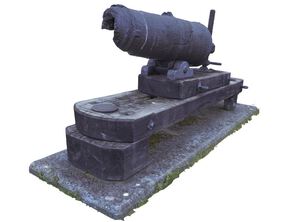 |
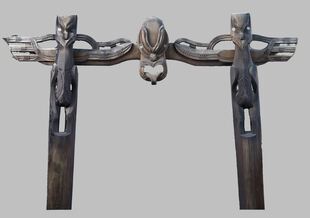 |
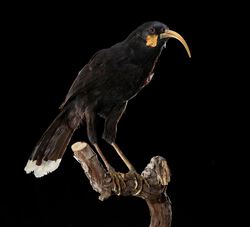 |
| The 3d model carronade |
The 3d model waharoa |
The 3d model huia |
Research Topic - Indigenous Cloud Storage
This research topic considers the welfare of indigenous tribal data being securely stored to mitigate the Cyber Security risks to communities.

Virtual Reality - Rongowhakaata Taonga Repatriation
We are building a long-term relationship with Rongowhakaata Iwi Trust in which we support the iwi's work in restoring their connection between place, history and whakapapa of Tūranga. Our research team is digitising taonga and engaging in co-design of the surrounding infrastructure and processes that are necessary for the iwi to have full governorship and ownership of their digital taonga into the future.
Augmented Reality - Te Ruapekapeka Trust Mobile Application
The Ruapekapeka heritage Pā site is Aotearoa’s best-preserved and one of the country’s most significant battle sites. It was the site of the last battle of the Northern Wars, where approximately 400 warriors stood against a combined British force of 1600 servicemen and their friendly allies in 1845. The warriors built a pā (fortification), which was cleverly adapted to the methods and armaments of European warfare. A splendid exemplar of early Māori engineering feats.
Today’s modern era presents challenges and opportunities for the heritage site like matching indigenous knowledge to technology as a way to revisit heritage stories using the digitally focused IT artefact. To confront these challenges, a case study exploring kaupapa Māori practices during the digital construction of historical artefacts is investigated. One that pursues the IT artefact as an indigenous socio-technical system (iSTS), an indigenous body of work operating as an intelligent agent. Inimitably accessing kaupapa Māori properties available for discrete testing as an early design activity during the construction of the IT artefact.
The research seeks to shape kaupapa Māori practices as a way to connect Te Ruapekapeka Trust to technology as a social, economic, and environmental eco-system. Laying the foundation for an indigenous (kaupapa Māori) data filtering system.
This project is part of a long-term relationship with Te Ruapekapeka Trust and aims to investigate how extended reality techniques can be used to preserve and portray the stories of the whenua. We have developed a mobile application that tracks users as they explore te Ruapekapeka Pa, the site of the last major battle in the Northern Wars, and notifies them when they reach sites of significance and tells them the story of that site through text and video. Interactive augmented reality experiences at several sites also help immerse users in what the site may have looked like in 1845.
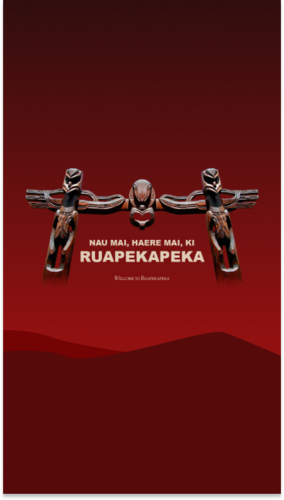 |  | 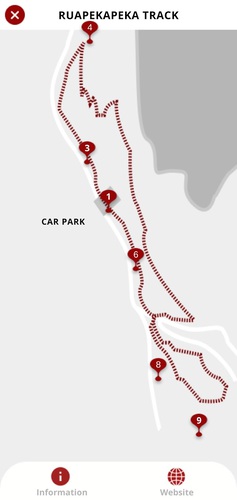 | 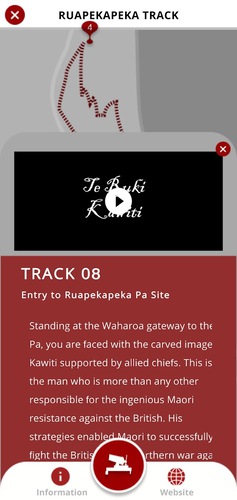 |
| Home Screen | Information Guide | Track Layout | Track-8 Experience |
